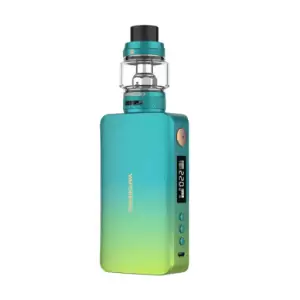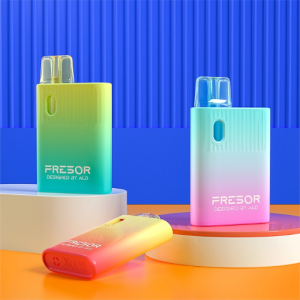Introduction: The Rise of Vape Tourism
In recent years, the phenomenon of vape tourism has garnered significant attention, marking a new trend among enthusiasts of disposable vapes. This emerging travel niche caters to individuals who wish to explore the world without parting from their favored vaping devices. However, the journey of a vape tourist is not without its challenges, primarily due to the diverse and often stringent regulations governing the use of disposable vapes across different countries.
Understanding the global landscape of vaping laws is crucial for ensuring a smooth travel experience. Regulations can vary dramatically from one country to another, affecting where and how travelers can use their disposable vapes. For instance, some countries welcome vaping with minimal restrictions, whereas others have imposed complete bans on the sale and use of vaping products.
The rise of vape tourism underscores the importance of staying informed and compliant with local laws to avoid unintended legal issues. It’s not just about enjoying the convenience and pleasure of vaping but also about respecting the legal and cultural boundaries of the destinations visited. As Dr. Sarah Johnson, a public health expert, emphasizes, “The key to responsible vape tourism lies in awareness and respect. Travelers must navigate the complexities of local regulations with a deep understanding of their responsibilities towards public health and safety.”
This guide aims to provide vape tourists with the essential knowledge and tips needed to navigate the world with their disposable vapes. From understanding the components that might be scrutinized under various regulations to knowing the cultural nuances that could influence vaping practices abroad, this article will cover all you need to know to make your vape tourism experience as seamless and enjoyable as possible.

Components of a Disposable Vape: What You’re Carrying
Disposable vapes have surged in popularity due to their convenience and ease of use, making them a favored choice for both seasoned vapers and those new to vaping. Understanding the components of your disposable vape is essential, especially when traveling, as different countries may have specific regulations concerning these devices.
A typical disposable vape consists of a battery, atomizer, and e-liquid. The battery powers the device, the atomizer heats the e-liquid to produce vapor, and the e-liquid contains a mixture of nicotine, flavorings, and propylene glycol or vegetable glycerin. These components are encased in a single unit, designed for use until the e-liquid is depleted, after which the entire device is disposed of.
The composition of disposable vapes can influence their acceptance in various jurisdictions. For example, countries with strict nicotine regulations might scrutinize the nicotine content in the e-liquid, while others may have specific guidelines about the disposal of batteries due to environmental concerns.
Travelers should be aware of how these components are viewed under different legal frameworks to navigate restrictions effectively. For instance, some countries may allow the possession of disposable vapes but restrict the sale of nicotine-containing e-liquids. This distinction is crucial for vape tourists who plan to bring their devices abroad.
Legal expert and vaping advocate, Michael Greene, advises, “Before embarking on your journey, research the specific requirements related to the components of disposable vapes in your destination. This proactive approach can save you from unnecessary inconvenience and ensure that your travel experiences remain positive.”
By familiarizing themselves with the basic makeup of their vaping devices, travelers can better prepare for potential scrutiny at customs and adhere to local regulations, ensuring a hassle-free experience while indulging in their vaping hobby abroad.
The Legal Landscape: Where Are Disposable Vapes Allowed?
The global legal landscape for disposable vapes is as diverse as the cultures and governments that regulate them. For enthusiasts of disposable vapes and vape tourism, understanding where these devices are welcomed, restricted, or outright banned is crucial for seamless travel experiences.
Countries like the United Kingdom and Canada have adopted relatively vape-friendly laws, recognizing disposable vapes as alternatives to traditional tobacco products. These nations have implemented regulations that ensure product safety without significantly hindering access. In the UK, for example, the Tobacco and Related Products Regulations 2016 set specific standards for nicotine concentration and tank size, but disposable vapes remain accessible to adults.
Conversely, nations such as Thailand, Singapore, and Brazil enforce strict prohibitions on the sale and use of disposable vapes. These bans extend to tourists, who can face hefty fines or even imprisonment for vaping or carrying vaping devices. The reasons for such stringent measures vary but often include public health concerns, moral considerations, or the influence of traditional tobacco industries.
Travelers should also be mindful of regions with evolving regulations. Countries like India, where a nationwide ban on electronic nicotine delivery systems (ENDS) was announced, showcase how quickly the legal stance on vaping can change, potentially impacting vape tourists.
Dr. Helen Redmond, a leading expert on nicotine policy, emphasizes the importance of staying informed: “The legal status of disposable vapes can significantly affect your travel plans. Always check the current laws of your destination regarding vaping. Being informed can prevent unintended legal issues and enhance your travel experience.”
Understanding the legal landscape for disposable vapes is not just about knowing where they are allowed; it’s about recognizing how laws reflect broader attitudes toward vaping. By researching and respecting these regulations, vape tourists can navigate international travel more effectively, ensuring that their journey with disposable vapes is both enjoyable and compliant with local laws.
Air Travel with Disposable Vapes: A Guide
Navigating air travel with disposable vapes requires understanding and adhering to airline policies and aviation regulations. For those looking to include disposable vapes in their travel essentials, here’s a comprehensive guide to ensure a smooth journey.
Packing Disposable Vapes: The Basics
Carry-On Restrictions: Generally, disposable vapes and e-cigarettes must be carried in your carry-on luggage or on your person. This rule is due to the safety risks associated with the lithium batteries in disposable vapes when placed in checked baggage.
Battery Considerations: Since disposable vapes contain lithium batteries, they are subject to aviation rules regarding battery capacity. The International Air Transport Association (IATA) provides guidelines that limit passengers to batteries with a maximum lithium content of 2 grams per battery for personal devices.
Airport Security Tips
Transparent Communication: Declare your disposable vape to security personnel. Transparency helps avoid confusion and ensures that you adhere to airport regulations.
Preparation for Inspection: Be prepared to remove your disposable vape from your carry-on bag for security screening. Similar to laptops and liquids, security may require a closer look.
Airline Policies on Vaping
No Vaping Onboard: Virtually all airlines prohibit the use of disposable vapes and any form of vaping onboard the aircraft. This rule is in place to ensure passenger comfort and safety.
Policy Variations: While the ban on in-flight use is almost universal, policies regarding the transport of disposable vapes can vary slightly between airlines. Always check your airline’s specific guidelines before flying.
Captain Michael Johnson, a veteran pilot with over 20 years of experience, advises, “Always prioritize safety and courtesy. While you can bring disposable vapes on most flights in your carry-on, using them onboard is not just prohibited; it’s a matter of respect for your fellow passengers and crew.”
Final Thoughts
Traveling with disposable vapes doesn’t have to be complicated. By following these guidelines, travelers can ensure they comply with airline regulations and enjoy a hassle-free journey. Remember, the key to a smooth travel experience with your disposable vape lies in being informed, prepared, and respectful of the rules and those around you.
Cultural Attitudes and Vaping: Navigating Social Norms
The acceptance of disposable vapes varies significantly across cultures, impacting where and how individuals can enjoy vaping. Understanding these cultural attitudes is crucial for travelers who wish to respect local norms while indulging in their vaping habits.
The Spectrum of Cultural Acceptance
Openness vs. Restriction: In some regions, vaping is seen as a modern alternative to smoking, with disposable vapes enjoying a relatively open acceptance. However, other cultures may view vaping with skepticism or even outright hostility, influenced by public health concerns or social norms.
Public Spaces: The use of disposable vapes in public spaces is a contentious issue. While some cities may have designated vaping areas, others enforce strict bans on vaping in public places, mirroring smoking restrictions.
Navigating Social Norms
Do Your Research: Before using your disposable vape in a new location, research local laws and attitudes towards vaping. This due diligence can prevent unintentional disrespect or legal issues.
Ask Locals for Guidance: When in doubt, consult with locals or fellow travelers. They can offer valuable insights into where it’s socially acceptable to vape and any nuances in local etiquette.
Dr. Linda Gray, a cultural anthropologist, notes, “The key to responsible vaping while traveling is understanding and respecting the cultural context. In some places, vaping is seen as progressive; in others, it may be frowned upon. Always err on the side of caution and respect.”
Tips for Respecting Local Customs
Discretion is Key: Even in areas where vaping is allowed, exercising discretion and avoiding public displays can help maintain respect for local norms.
Cultural Sensitivity: Be especially mindful in countries with strict regulations against smoking and vaping. In these locales, public vaping could not only be illegal but also culturally insensitive.
Conclusion
Navigating the cultural complexities of vaping during travel requires awareness and sensitivity. By respecting local customs and regulations regarding disposable vapes, travelers can enjoy their vaping experience without offending local sensibilities or encountering legal problems. Remember, when it comes to vaping and travel, being informed and considerate is paramount.
Must-Know Tips for Vape Tourists
As vape tourism gains popularity, it’s essential for travelers to stay informed and prepared to ensure a smooth and enjoyable experience with their disposable vapes. Here are some crucial tips to keep in mind:
Stay Informed about Regulations
Research Before You Go: Before embarking on your journey, research the vaping laws and regulations of your destination country. Websites of local government agencies or reputable vaping advocacy groups can provide up-to-date information.
Know Your Rights: Familiarize yourself with your rights as a vaper, including where vaping is permitted and any restrictions on purchasing or carrying disposable vapes. Being informed can help you avoid potential conflicts or legal issues.
Pack Wisely
Check Airline Policies: If you plan to travel by air, review the policies of your airline regarding carrying disposable vapes in both carry-on and checked luggage. Ensure your vape devices comply with airline regulations to prevent any confiscations or delays.
Secure Your Gear: When packing your disposable vapes, make sure they are properly secured to prevent leakage or damage during transit. Consider using protective cases or pouches designed for vape devices.
Respect Local Customs and Etiquette
Observe Local Norms: Respect the vaping culture and etiquette of the places you visit. If unsure, observe how locals behave regarding vaping and follow suit.
Use Discretion: Even in areas where vaping is allowed, be mindful of your surroundings and avoid vaping in crowded or enclosed spaces where others may be bothered by the vapor.
Be Prepared for Changes
Stay Flexible: Vaping regulations can change unexpectedly, so be prepared to adapt your plans accordingly. Stay updated on any developments in vaping laws, especially if you plan to visit multiple destinations during your trip.
Have Alternatives: Consider bringing alternative nicotine products, such as nicotine gum or patches, in case vaping is not feasible or permitted in certain locations.
Dr. Michael Johnson, a vaping advocate, emphasizes, “Vape tourists should prioritize respect for local laws and customs while enjoying their vaping experience. Being knowledgeable and prepared can make all the difference in having a hassle-free trip.”
Conclusion
By staying informed, packing wisely, respecting local customs, and being prepared for changes, vape tourists can navigate the complexities of vaping regulations with ease. With these tips in mind, you can enjoy your travels while indulging in your favorite vaping pastime responsibly and respectfully.
Future of Vape Tourism: Trends and Predictions
The future of vape tourism holds both opportunities and challenges as the landscape of vaping regulations continues to evolve. Here’s a look at some trends and predictions for the future of vape tourism:
Technological Advancements
Innovations in Vaping Devices: Expect to see continued advancements in vaping technology, including improvements in battery life, vapor production, and flavor options. These innovations may enhance the overall vaping experience for tourists, making it more convenient and enjoyable.
Shifts in Legislation
Global Harmonization: Over time, there may be efforts to harmonize vaping regulations across different countries and regions, leading to more consistent rules for vape tourists. This could simplify the process of navigating regulations and increase clarity for travelers.
Growth of Vape-Friendly Destinations
Rise of Vape-Friendly Tourism: As vaping gains wider acceptance, we may see the emergence of vape-friendly destinations that cater specifically to vape tourists. These destinations may offer specialized tours, events, and accommodations tailored to vaping enthusiasts.
Impact of Public Health Initiatives
Health Education Campaigns: Public health campaigns aimed at raising awareness of the risks and benefits of vaping may influence vaping regulations and attitudes towards vape tourism. Tourists may encounter more educational resources and warnings about vaping in popular tourist areas.
Advocacy Efforts
Vaping Advocacy Groups: Vape tourism may benefit from increased advocacy efforts aimed at protecting vapers’ rights and promoting responsible vaping practices. These groups may advocate for policies that support vape tourism while addressing concerns about public health and safety.
Dr. Emily Chen, a leading researcher in vaping trends, predicts, “As vape tourism continues to grow, we can expect to see a shift towards more vape-friendly destinations and experiences. However, this growth will also be accompanied by greater scrutiny and regulation, requiring vape tourists to stay informed and adaptable.”
Conclusion
While vape tourism offers exciting opportunities for vapers to explore new destinations and cultures, it also presents challenges due to the complex and evolving nature of vaping regulations. By staying informed, advocating for their rights, and supporting responsible vaping practices, vape tourists can help shape a future where vaping is embraced and enjoyed worldwide.

FAQs: Common Questions About Disposable Vapes
Here are some frequently asked questions (FAQs) about disposable vapes:
1. What are disposable vapes?
Answer: Disposable vapes are single-use vaping devices that come pre-filled with e-liquid and are typically disposed of after use. They are designed to be convenient and easy to use, making them ideal for vapers who are on the go or looking for a hassle-free vaping experience.
2. How do disposable vapes work?
Answer: Disposable vapes work by heating up the e-liquid stored in the device’s reservoir using a heating element known as the atomizer. When activated, the atomizer converts the e-liquid into vapor, which is then inhaled by the user. Disposable vapes are usually activated by inhaling on the mouthpiece or by pressing a button, depending on the device’s design.
3. What are the main components of a disposable vape?
Answer: The main components of a disposable vape include the battery, which powers the device, the atomizer, which heats up the e-liquid, and the e-liquid reservoir, which holds the e-liquid. Some disposable vapes also feature additional components such as airflow control mechanisms and LED indicators.
4. Are disposable vapes recyclable?
Answer: While some disposable vapes claim to be recyclable, the reality is that many recycling facilities do not accept them due to the complexity of their design and the potential hazards associated with handling used vaping devices. As a result, it’s best to check with local recycling facilities or contact the manufacturer for guidance on proper disposal methods.
5. Are disposable vapes allowed on airplanes?
Answer: The regulations regarding the use of disposable vapes on airplanes vary depending on the airline and the destination. In general, most airlines prohibit the use of vaping devices, including disposable vapes, on board their aircraft. However, travelers may be permitted to carry disposable vapes in their carry-on luggage, provided they comply with the airline’s rules regarding battery-powered devices.
6. How long does a disposable vape last?
Answer: The lifespan of a disposable vape depends on factors such as the size of the device’s battery, the capacity of the e-liquid reservoir, and the user’s vaping habits. On average, a disposable vape can last anywhere from a few hundred to several hundred puffs before the e-liquid runs out or the battery dies. Once the device is empty or no longer producing vapor, it should be disposed of properly.
7. Can I refill a disposable vape?
Answer: No, disposable vapes are designed to be used once and then disposed of. Attempting to refill a disposable vape can damage the device and may pose safety risks. It’s best to use disposable vapes as intended and dispose of them responsibly once they are empty.






